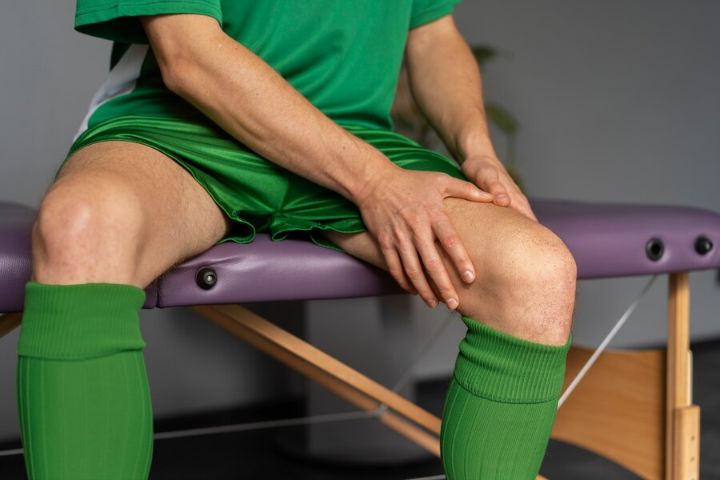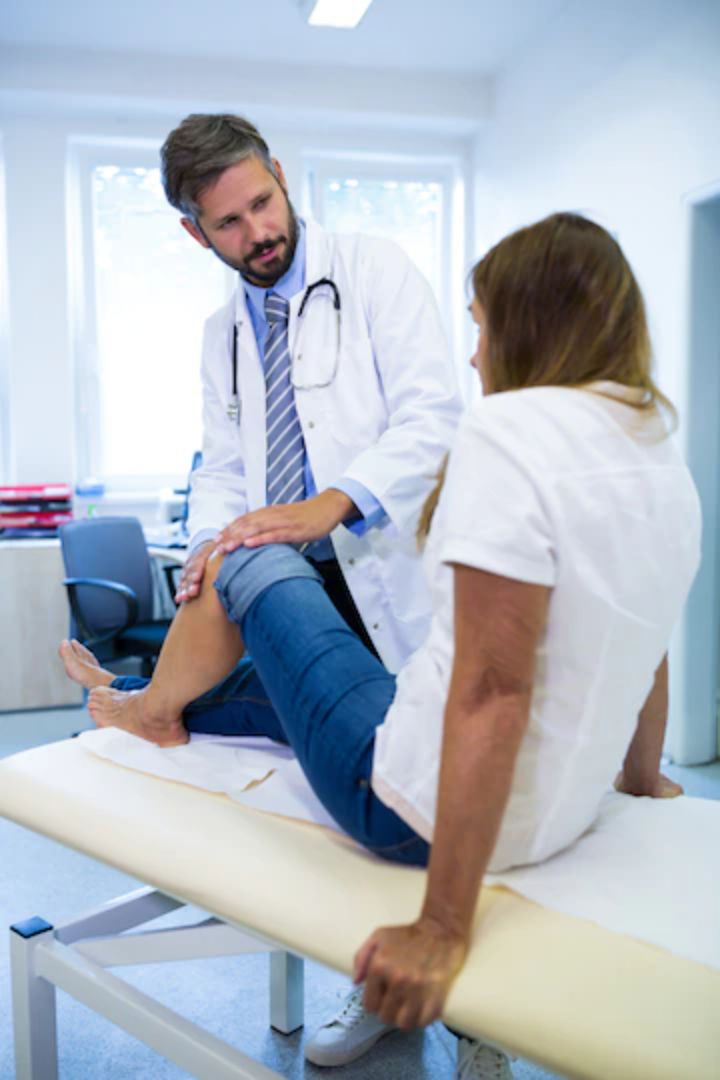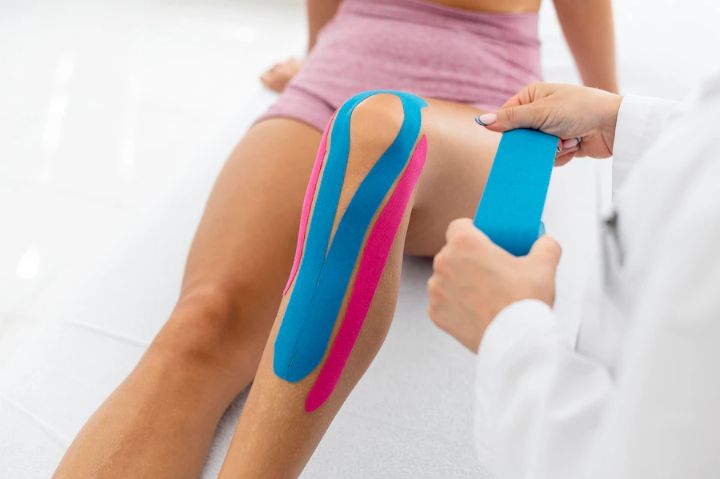ACL injuries are a common type of knee injury that affect people of all ages and activity levels. The Anterior Cruciate Ligament (ACL) is a critical stabilizing ligament that connects the femur to the tibia bones in the knee. An ACL injury occurs when the ligament is stretched or torn, causing pain, swelling, and instability in the knee.
ACL injuries can happen for various reasons, including sudden twisting or pivoting movements, direct impact to the knee, or overuse injuries. Athletes participating in high-impact sports such as football, basketball, and soccer are particularly susceptible to ACL injuries. However, non-athletes can also experience ACL injuries due to falls, car accidents, and other traumatic events.
ACL injuries are a type of knee injury that can have significant implications for individuals. The anterior cruciate ligament (ACL) is one of four major ligaments in the knee joint, and it plays an important role in stabilising the knee during physical activity.

Photo Credit: Freepik
ACL injuries typically occur during high-impact activities like sports, where there is a sudden change in direction or pivot, or a direct blow to the knee. These injuries can also happen during everyday activities like running, jumping, or falling.
ACL injuries can significantly impact an individual’s physical and emotional well-being. In addition to the pain and discomfort associated with the injury, ACL tears or ruptures can severely limit mobility and flexibility, making even simple tasks like walking or climbing stairs difficult.
For athletes and active individuals, ACL injuries can also significantly impact their ability to participate in sports and physical activity, which can lead to a loss of fitness, confidence, and enjoyment.
If you suspect that you have an ACL injury, it is important to seek medical attention as soon as possible. Prompt diagnosis and treatment can help to minimise the damage and increase the chances of a successful recovery.
The diagnosis of an ACL injury typically involves a physical examination, medical history, and imaging tests like X-rays, MRIs or CT scans.
Treatment of ACL injuries can vary depending on the severity of the injury and the individual’s age, overall health, and activity level. Non-surgical approaches like rest, ice, compression, and elevation (RICE) therapy, physiotherapy, and rehabilitation exercises may be recommended for mild or partial ACL injuries.
Surgical intervention like ACL reconstruction or ACL surgery may be necessary for more severe or complete ACL tears. These procedures involve replacing the damaged ligament with a graft from another part of the body, typically a tendon from the knee, hamstring or quadriceps muscles.

Photo Credit: peoplecreations
Rehabilitation after ACL surgery typically involves a combination of physiotherapy, strength training, and exercise therapy to restore mobility, flexibility, and strength to the affected knee. This phase of recovery is critical to the success of the treatment and can take several months to complete.
An ACL injury can cause a range of symptoms that can vary from person to person. However, a few common symptoms are associated with this type of injury.
If you are experiencing any of these symptoms, seeking medical attention as soon as possible is important. Prompt diagnosis and treatment can help to prevent further damage and improve your chances of a successful recovery.

Photo Credit: Freepik
When it comes to treating ACL injuries, a variety of approaches are available, depending on the severity of the injury and the individual’s specific needs. Non-surgical options may be suitable for minor injuries, while more severe cases may require surgical intervention.
Surgery may be necessary if non-surgical treatments are ineffective or if the injury is more severe. Reconstruction is the most common surgical treatment for ACL injuries, which involves using a tissue graft to replace the damaged ligament. This may be done using a patient’s own tissue or a donor graft.
Surgical intervention is typically followed by a period of rehabilitation to help restore strength and mobility to the knee.
Prevention is key when it comes to avoiding future ACL injuries. This may involve reducing the risk of injury during physical activity, such as warming up properly, using proper technique, and wearing appropriate footwear.
Maintaining strong knee muscles through regular exercise and avoiding activities that place excessive strain on the knee joint is also important.
By taking these steps, individuals can not only reduce their risk of future ACL injuries but also help to ensure a successful recovery from any existing injuries.

Photo Credit: javi_indy
Preventing ACL injuries is essential for both athletes and non-athletes alike. While it is impossible to eliminate the risk of injury, there are several strategies you can implement to reduce your chances of an ACL tear or rupture.
Before engaging in physical activity, it is crucial to warm up the muscles and joints in your body properly. This can include dynamic stretching, light jogging, or even practicing specific movements and techniques you will use during the activity. A proper warm-up can help prevent sudden movements that can result in an ACL injury.
Strengthening the muscles around the knee joint can also help prevent ACL injuries. This can include exercises focusing on the quadriceps, hamstrings, and glutes. Working with a qualified trainer or physiotherapist is important to ensure that you are performing these exercises correctly and effectively.
If you do experience an ACL injury, rehabilitation and recovery are essential for a successful return to physical activity. This can include working with a physiotherapist to rebuild strength and flexibility in the knee joint and gradually increasing activity levels over time.
In some cases, surgery may be necessary to repair an ACL tear or rupture. This can include ACL reconstruction, which involves using a graft to replace the damaged ligament. Discussing all treatment options with your doctor or physiotherapist is important to determine the best course of action for your situation.
Ultimately, preventing ACL injuries requires a combination of proper warm-up techniques, strengthening exercises, and rehabilitation and recovery strategies. By taking a proactive approach to injury prevention and care, individuals can reduce their risk of ACL injuries and enjoy a safe and successful return to physical activity.
An ACL injury refers to the tearing or rupture of the Anterior Cruciate Ligament, which is one of the major ligaments in the knee joint.
ACL injuries can occur due to various reasons, including sports-related activities, sudden changes in direction, direct impact to the knee, or landing incorrectly after a jump.
Common symptoms of ACL injuries include pain, swelling, knee instability, and difficulty with range of motion. However, it’s important to note that symptoms may vary from person to person.
Treatment options for ACL injuries in Australia can include non-surgical approaches such as physiotherapy and rehabilitation exercises and surgical interventions like ACL reconstruction and ACL surgery.
ACL injury prevention can be achieved through proper warm-up techniques, strengthening exercises, and using appropriate protective equipment when participating in sports or physical activities. Also, post-injury rehabilitation and recovery are crucial for successful physical activity returns.